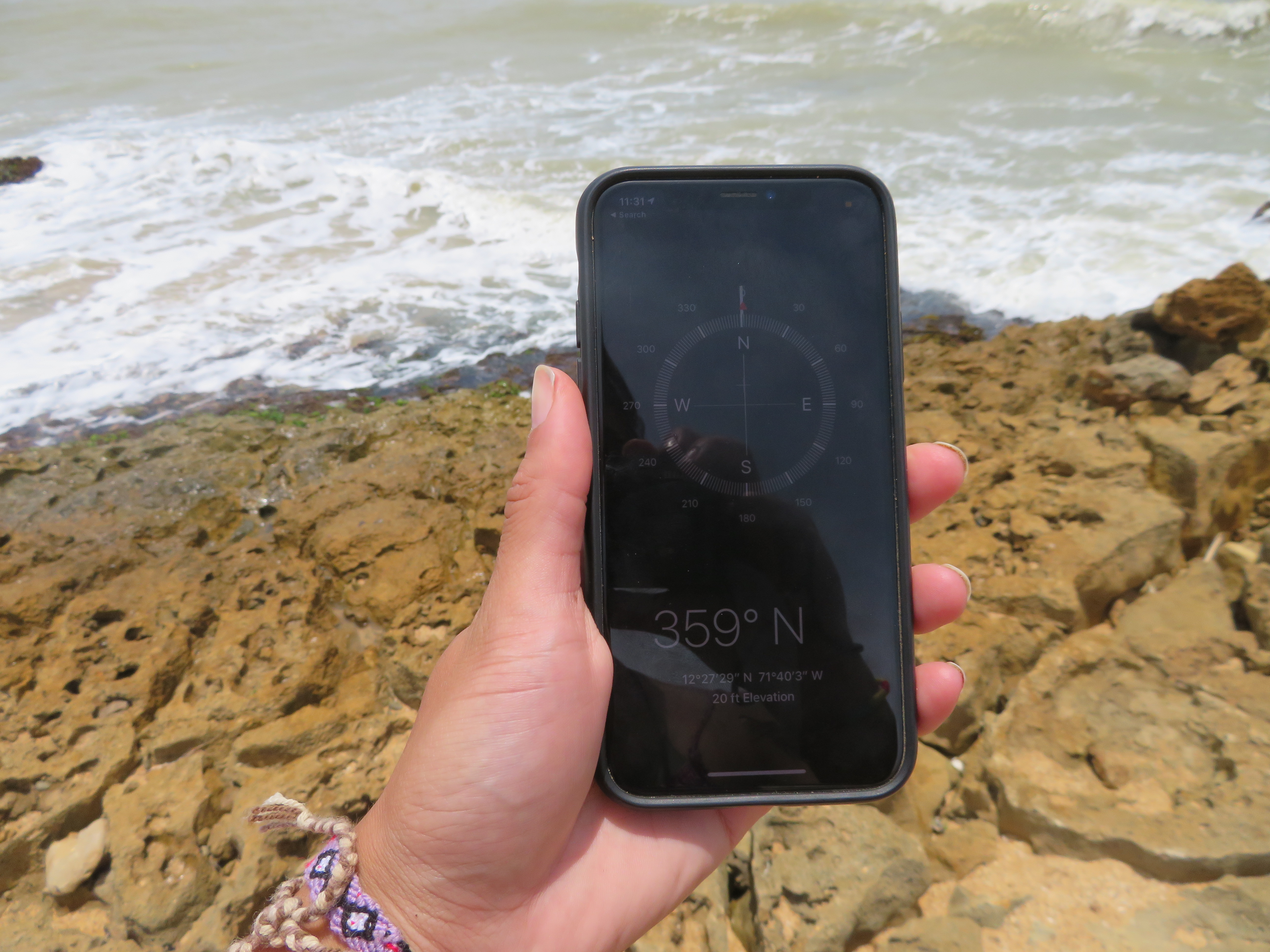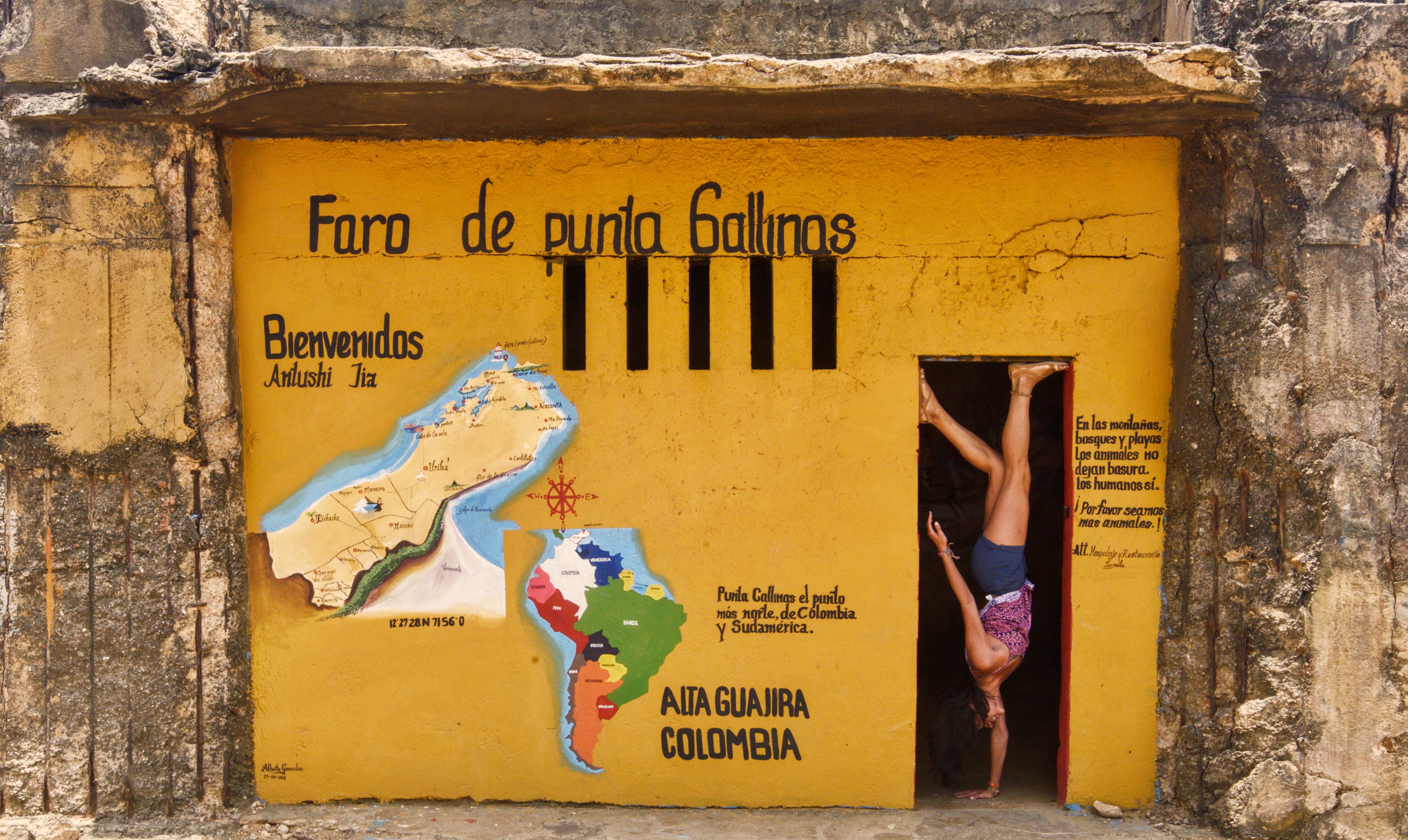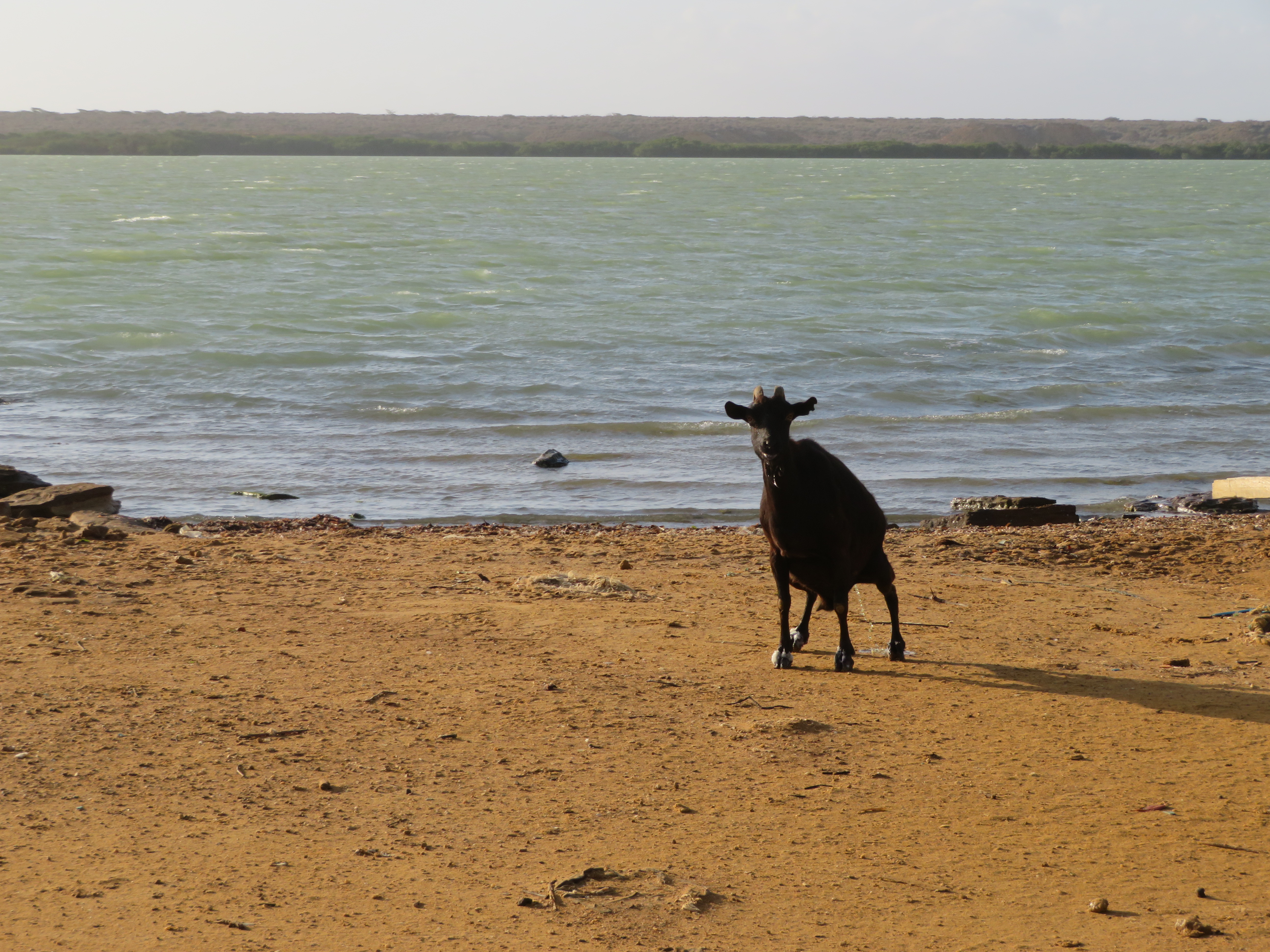La Guajira: a beautifully unpolished, bittersweet gem! This was such a unique and adventurous trip. It is quite out of the way so we were a bit hesitant to embark on this trip, but I am so glad we did. La Guajira is a land of many diverse landscapes and beautiful people, but also extreme poverty and few resources.
I have seen many people making do with few resources, but I’ve not seen anything to such an extreme. Having just separated myself from so many of my physical items/comforts, it was even more eye-opening to see how people are able to make do with so little and how much we take for granted.
Between the beautiful landscapes and the unique experiences, this experience is definitely one that I’ll keep with me forever!
In this post…
La Guajira
Choosing an Adventure – Sumaj Feeling
Over breakfast at our hostel in Santa Marta, we were speaking with a new volunteer about our plans to bus over to head towards La Guajira. He was telling us what a wonderful experience it was when his friend, Julian, who just so happened to be a new La Guajira tour operator (company: Sumaj Feeling), walked in.
Julian speaks Spanish and is only beginning to learn English, so he did his best to describe his trip/photos to us. His efforts were wonderful and he also wanted us to get more practice with our Spanish, so we (tried to) speak Spanish while he spoke English.
The other tour company that we’d initially inquired with and signed up for was only going to go on the trip if another 2 people had signed up to go on the same day. Julian was going to take us up to La Guajira regardless, so it was an easy decision.
We continued to make our way up for a one-night stay in Riohacha where we would meet Julian the next day to embark on our trip to La Guajira.
About Our Time in La Guajira
There was a passage in Lonely Planet’s South America on a Shoestring to introduce the reader to Cabo de la Vela:
Cabo de la Vela isn’t for everybody. Really. Getting here by public transportation involves a bone-shaking ride in the back of a truck, possibly driven at lunatic speed by a man with no apparent fear of death or injury. He may spend much of the journey draining beer cans in a single slug. With luck, his assistant will be reasonably sober and will manage not to fall out of the truck. Fingers crossed.
― from Lonely Planet South America on a Shoestring (Travel Guide)
I found this to be extremely salty, unfairly blanketing, and a very poor, unwarranted representation of the beauty of the holistic experience that you have in Cabo de la Vela and with the Wayuu people. Our driver, Juan, and the other drivers that we crossed paths with, all seemed completely sober and capable. They’ve grown up and lived in La Guajira and seem to know the roads like the back of their hands.
The roads in La Guajira are under-developed. Though it was very bumpy and occasionally we did go quite fast, I had complete trust in Juan. There are times that you are driving straight across a flat, empty desert and times where you are driving across very rocky terrain in a cactus forest. A 4×4 or motorbike is required to get anywhere.
While driving, you’ll occasionally pass folks that have tied rope across the road to the ends of cacti/large tree branches that they have positioned. In order to pass, you must pay some sort of toll. We were giving small packs of simple wafers (that were typically received with much excitement/gratitude), but at one point, we ran out. We all began rummaging through our bags to try to find alternative toll payments.
One of the most resounding, bittersweet moments came when we gave an apple to a young brother-sister pair. The way that their eyes lit up and they jumped up and down, the little girl clapping with genuine excitement as the boy immediately sunk his teeth into the apple, was something that I wish I could bottle up and keep with me forever. It was both amazing and heartbreaking to see how excited they got over something that we typically take as a given.
The heartbreak continued when we gave a pack of Oreo cookies to a young boy who accepted them, but immediately exclaimed, “Agua! Agua, por favor!” with a look of desperation in his eyes.
At our accommodations and throughout La Guajira, there was little, if any, running water and very limited solar-powered electricity. They had toilets, but if you wanted to flush, you had to walk out to get a bucket and pour with enough force that it would flush your excrements down. For showers, at our first hostel, we were provided a bucket of water for rinsing. At our second hostel, running water was turned on at 5pm and stopped when there was no more water. It was a dash to get your showers in. For electricity, there was also set period of time where electricity would come on and you had the ability to charge your phones/cameras.
Just like much of the Wayuu, we slept in chinchorros. Chinchorros are hammocks that have little wing-like flap attachments sewn onto the sides so that they can fold over and wrap you like a blanket.
Uribia

On the first day, we met at 8am and drove from Riohacha to Uribia where we had a few moments to peruse the artisan market for handmade mochilas, hats, and chinchorros before switching from our Riohacha car service to the 3-row 4×4 Toyota Land Cruiser that we would be riding in all weekend with another group of 3.
We also stopped at a small market where we picked up snacks/water (3L each recommended, we purchased 6L jugs to share) and the other group was able to purchase food for the weekend as they had not purchased the all-inclusive package.
Salinas de Manaure
We continued our drive and arrived at the salt production facility in Manaure. From inside the car, it was not easy to see how windy it was. As soon as I got out of the car, a huge gust of wind blew the shoulder-protecting hat that I’d just purchased in Uribia right off my head. I began to chase after it as I heard shrieks of “señora, señora!” and two small girls rushed past me and down into a small, rocky ravine in their sandals. They caught the hat, handed it to me, and began frantically tapping my arm for a “regalo, señora! Regalo para mi!” I thanked them profusely and handed them 2.000 pesos (a little bit less than 1USD).
We each provided a small payment to the woman at the front of the production facility and she led us on a tour (in Spanish) of a couple of the pools as she described the process. Unfortunately, I didn’t understand much with my lack of fluency in Español and also the wind, but one of our fellow tourists was able to translate some of his learnings for us gringos.

There are four types of salt in each mound: 1. dirty salt, 2. industrial salt, 3. salt for animal feed, 4. salt for human consumption. 
An additive is placed in the salt pool to keep algae from growing. Apparently, drinking the additive in the water is what gives flamingos their pink color! 
Un regalo for us from the young girl at the salt flats. 
Julian from Sumaj Feeling and our Salinas Tour Guide
Cabo de la Vela
We arrived at Pargo Dorado, our hostel in Cabo de la Vela where we would be having lunch and staying for the night.
For lunch, we had chivo (goat, typically prepared by cooking it in its own innards) and fish. I’d never had goat before. It was…different, but good!
After lunch, we had a few minutes to hop in the water before we needed to head out for a short hike. The water was very calm and quite warm. It was amazing.

Per Julian, you can wade 1 km out in the Cabo de la Vela water and the water will still only be at your neck. 
Eerily tranquil ocean water. 
Chinchorros on the beach!!!!
They have my heart.
Cerro Pilón de Azúcar and its Gold Beach

Julian told us a story of 3 brothers who angered the Wayuu gods and were sentenced to a life of manual labor. Were they to stop, they would be turned to stone. One of the brothers was turned to stone, into what is now known as the Sugar Pylon, just along the coast of Cabo de la Vela.
We were able to climb to the top of his summit and get an amazing (albeit very terrifyingly windy) view of our surroundings. Keep a tight hold on your cameras/phones/sunnies because they’ll blow away if given the chance.
Faro de Cabo de la Vela and Ojo de Agua

Sunset at El Faro de Cabo de la Vela 
Sunset over Ojo de Agua. No drinking water here! 😦
We hopped back in the LandRover and hurried over to El Faro de Cabo de la Vela for sunset. Despite the number of other tour groups that was there, it was serene and gorgeous.
After the sun dipped below the horizon, Julian began telling us about the Wayuu legend of Ojo de Agua. As the story goes, the abuela of a clan was designated by the gods as the only person allowed to obtain water from a stone. One day, her family followed her to see where she went each day. Because of this, and from this point on, water was no longer available here and the area has suffered from a drought ever since.
La Yonna para La Majayut
In Wayuu culture, when a girl has her first period, she is locked in a room for a set amount of time with the purpose of undergoing a “cleansing”. Initially, this set amount of time was 5 years. It has recently been reduced to 1-2 weeks.
In this time, only the girl’s mother and/or grandmother are allowed to see her and she is taught how to knit/sew, make chirrinchi, and perform matronly duties on a very limited diet.
After her period of isolation is over, it is time for a celebration with shots of chirrinchi (fermented panela/unrefined sugar cane–tastes kind of like a smooth tequila) in goat horns/hoofs! The men take turns dancing with the new majayut (woman) and the yonna (dance) is a series of 3-4 different types of steps around a circle with a man doing the steps backwards while the woman pushes forward. If the man falls over, another man steps in.
Thanks to the generosity of the Wayuu, we were able to see and participate in a mock ceremony (but I don’t have great photos of this because we went at night and it was so dark)!
Dunas de Taroa
We awoke at 5am and began our trek across the peninsula to Dunas de Taroa. It was even more rough and bumpy than the drive from the previous day.
The Dunas de Taroa were pretty impressive. You drive up and are met with a massive sand dune. Once you summit the dune, you can see the ocean. On this day, the water was far too rough for us to want to swim, though (allegedly) it is sometimes swimmable.
Punta Gallinas
The northernmost point of South America! To me, it seemed more of a just-want-to-be-able-to-say-that-I-was-here locale than anything else. Still pretty cool!



Our hostel for night 2 was very close to Punta Gallinas. It was a bit more populated with a couple of other tour groups. We weren’t sleeping on the water, but there was a small beach just a short walk down the hill.

Goat establishing dominance by showing me it wasn’t afraid to pee while looking me in the eye? 
Chinchorros at our hostel in Punta Gallinas. 
Pair of Crested Caracaras on a cactus.
Bonfire
On our last evening, a young Wayuu boy built a fire for us on the beach. We sat around the fire, looked at the stars, and drank some more chirrinchi. It was a nice, quiet ending to a great trip!
Thanks for the great time, Sumaj Feeling!
References: Other Links that Helped Me
- Denia Hania: Riohacha – Door to the La Guajira
- Lonely Planet’s South America on a Shoestring
(take this with a grain of salt as they seem to share some not-so-unbiased, questionable opinions in their review of La Guajira) - Sumaj Feeling (Instagram | Facebook)














